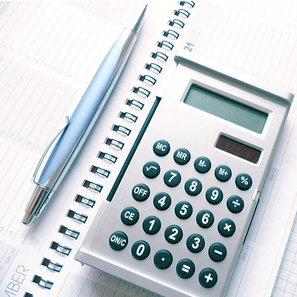
What is it exactly?
It's simple. The 50-30-20 rule works like this: 50% of your income goes to things you must have/need to spend on (rent, electricity, food, taxes), 30% goes to things you want to buy (that new iPhone, eating out, relaxing and watching a movie), and 20% goes to savings (bank savings, insurance, college funds, you name it). There. That's it. I told you it was simple. Blown away yet? Yes? Now let it sink in. Let it simmer.
Balance instead of big bucks
I've heard different versions of this rule over the years. There's the "Spend 25% less than what you're spending right now" rule. (To many, they're spending it all, so this is actually the 75-25 rule, which is very similar to the 80-20 savings to spending to savings ratio in the 50-30-20 rule.) Meanwhile, I was always told to aim for the 50-50 rule – that's 50% spending and 50% saving. It was difficult, and I was miserable. If you can pull it off, good for you, my friend. But I don't recommend it. That's no way to live.
The 50-30-20 plan seeks balance instead of big bucks. And you know your finances are in balance when only 50% of your income – or less – goes to your "must have" spending. "Must haves" are things you can't survive without, like food, rent or mortgage, electricity, Internet, mobile. Spending more than 50% on rent? Then you know your finances are out of whack, and it's time to either earn more or move to somewhere cheaper. It's a surefire way of finding out if you're living too large, or living beyond your means. Easy right?
I've become a master at "living small." It started in 2011 when I quit my day job to pursue a project that would take me at least two years to complete. To make the numbers work, I cut down my must-haves, traded down to a fuel-efficient car, skipped the latest iPhones, downgraded my phone plan, let go of an expensive gadget-buying habit, avoided using credit cards, and even quit smoking. The result? I made the numbers and I’ve never looked back since then.
Saving for tomorrow
Then there's the crucial bit: 20% of your income should go to savings. The reason for this is saving 20% of your income from now until retirement is almost always enough to let you live at your current level of spending until you die – provided you're not too old when you start. This is made possible through the power of compounded interest, which is the best kind of magic in the universe.
And it gets better. The earlier you start, the larger your pot of gold will be at the end of your rainbow. For example, if you're one of those who started saving in their 20's, you'll have significantly more for your retirement years.
But this isn't the best part of the 50-30-20 rule...
The Best Part
The best part of the 50-30-20 rule is that it acknowledges that money is for spending. You see, the 30% in the middle is all about spending… on anything. You can help yourself to caviar, cover yourself in gold, or hey, you can burn it. Just, whatever you do, don't keep it.
Yes, unlike all the “killjoy” financial expert in the universe, the ladies who made this plan acknowledge that money exists so that you can live the life you want – which is child's play when your finances are in balance.
I used to spend too much on things I wanted but didn't need – eating out, gadgets, toys, I just had to have them all. This spending ate into the 20% that should have been going to savings – and my future. But now, with the 20% taken care of first, spending the 30% has become guilt-free, purely joyful spending.
Balancing Act
We're a month into 2014 and it's a good time to take a good look at where your money's going and put everything in order. In fact, I'll be revisiting this plan myself because our lives are going through a major shake-up: we're having a new baby.
The 50-30-20 plan is a worthwhile exercise and I highly recommend it. It's not easy, but if you can make it work for you, it's definitely worth it. Good luck.











.png)

